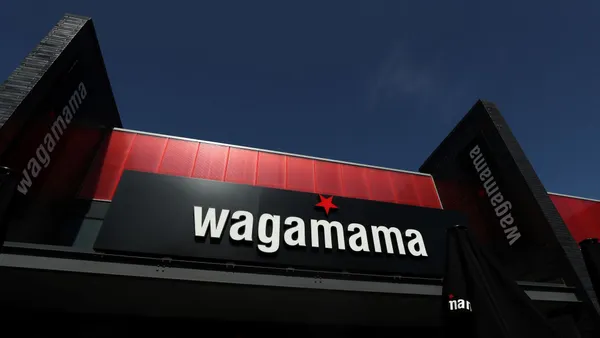Drew Sementa is the CEO of Tidal Commerce.
Restaurant owners say inventory, credit card processing, and accounting are the most valuable integrations for their point-of-sale systems. If that’s the case, then why are so many restaurants in the U.S. lacking modern payment technology? Some may feel the shift is too complicated or too expensive, but those claims don’t consider the bigger picture.
The magnetic strip or magstripe card is still widely used among U.S. restaurants, even though they were first introduced in the U.S. in 1969. Magstripe payment systems create a number of problems for restaurants, including making them more susceptible to fraud and keeping them on the hook for chargebacks. They make the restaurant appear outdated and lessen the trust of the customer.
Many other countries, including most in Europe, offer people a variety of options in how they pay for their meals. Guests can pay in cash, by credit or debit card, mobile pay, and even use self-serve kiosks. Payment systems are advancing so quickly that 68% of people prefer to use a debit or credit card over cash even when they are purchasing a low-ticket item such as a coffee or a dessert.
More recently, mobile payments have surged in popularity, with 39% of consumers saying that they would use this method if restaurants made it available. However, most restaurants in the U.S. haven't cottoned on to this new, convenient payment method. In fact, many U.S. eateries are only just switching to EMV, despite the fact that this technology has been available since the 1990s. This delay in switching to EMV makes little sense for restaurants on numerous fronts: by switching they can save money, avoid penalties leveraged by cardmember associations, minimize their chance of breaches and build trust with their clients.
Save money in the long term
A common misconception is that switching to EMV is too expensive, but it’s now cheaper than ever, and restaurant owners are losing money every day by not adopting EMV. Take chargebacks, for example. Every business owner is familiar with the costs of chargebacks — either through instances of legitimate chargebacks, friendly fraud or chargeback fraud.
A 2016 report stated that 81% of consumers contact their bank directly when they see a suspicious charge because it is more convenient than speaking to the merchants. What consumers don’t know is that 49% of these inquiries are misinterpreted by banks and filed as chargeback claims. The burden then falls on merchants to prove that the chargeback shouldn’t be applied, which is time-consuming and labor-intensive. And the thing is, if a restaurant owner doesn’t have EMV, they have a much higher chance of losing chargeback cases. This is because since the 2015 EMV liability shift, restaurants have been liable for fraudulent charges by chip card-users that were processed using the magnetic strip. This decreased ability to fight chargebacks dramatically increases merchant expenses and outweighs any upfront costs incurred through a transition to EMV.
Reduce the chance of crippling breaches
As businesses move towards EMV implementation, more liability is placed on those who have not yet upgraded their systems. As of October 2015, businesses that have not yet switched to EMV technology are now liable for fraud that occurs through in-store transactions for POS systems.In October of 2016, the same liability was placed on ATMs, and finally for other networks in October 2017.
With chip cards, each transaction is unique and all information is sent as an encrypted token. Even if someone gets their hands on a token, there’s no point because it can’t be used again in a different transaction. If restaurants are using a magstripe and someone steals a client’s card information, the establishment can be held accountable for the breach and penalized. In the worst cases, the business could lose its right to accept credit cards.
Build trust with your client base
Consumers are more demanding than ever for convenience, security and trust. Of course, food and service quality are top concerns for restaurants diners. However, we shouldn’t underestimate their desire for payment flexibility and secure transaction processes too. Another 2016 report concluded that 79% of diners believed restaurant technology improved their overall experience.
By offering a variety of payment options, restaurant owners can maintain a competitive advantage over other establishments which are slow to upgrade. Aside from payment systems, modernizing a restaurant can include using tablets to order, self-serve kiosks, building mobile-friendly websites and more.
Payment solutions are continuously being changed, and the use of cash is diminishing with every new tech solution. New payment methods are more secure, and not using modern tech could make restaurants appear outdated. As society increasingly goes cashless, those who get on board and change their POS systems will benefit by reducing risks, saving money, and building a better relationship with their clients. Those who don’t may soon have to get used to empty tables












